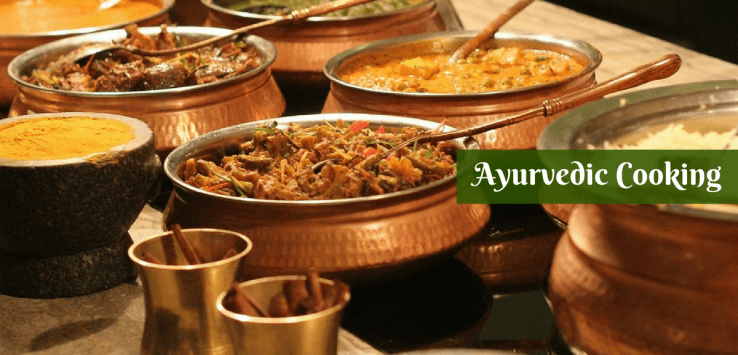- 8 Principles Of Ayurvedic CookingÂ
- 1. It’s An Integrated Process
- 2. Commitment To Vegetarianism (A Sattvic Diet)
- 3. Positivity Is The Special Ingredient
- 4. Six Tastes of Ayurvedic Cooking
- 5. Dosha Balancing
- 6. Foods According To Seasons
- 7. Fresh And Organic
Cooking is definitely an art. And the one who can master the basics knows how to innovatively make way towards a healthier lifestyle. When you understand that your body is a vehicle through which you can manifest a fulfilling life, Ayurvedic cooking is a great thing to try. So, what you put into your body is what gratifies both your mind and soul. Therefore, let your food be pure and prepared with utmost love and affection.
8 Principles Of Ayurvedic Cooking
The recommendations by Ayurveda in relation to our diet and lifestyle are applicable for all individuals. And it is in the traditional recipes handed down generation by generation that best shows the impact of Ayurveda to perfectly balance both health as well as taste.
1. It’s An Integrated Process
Ayurveda views cooking, nutrition along with digestion as an integrated and significant process. Major elements – including the three doshas, three gunnas as well as the seven dhatus and six tastes – are to be taken care of.
2. Commitment To Vegetarianism (A Sattvic Diet)
Ayurvedic cooking and recipes consist of plant-based (primarily whole foods) and mild spices. The motive of such cooking is to make you feel full and not fatigued or ill. A sattvic diet has a positive effect on the spiritual, emotional, sexual as well as intellectual aspects of human beings.
3. Positivity Is The Special Ingredient
What is Ayurvedic cooking? It is a mix of all the positive intentions along with healing vibrations that make your food a wholesome meal. Such a cooking method nourishes your taste buds and increases your awareness for accepting the beauty that is brought by the meal you are served. There’s a feeling greater than mere satisfaction!
4. Six Tastes of Ayurvedic Cooking
A meal that incorporates all the tastes of Ayurveda is flavorful and satiating. Those tastes are salty, sour, sweet, astringent, pungent and bitter.
5. Dosha Balancing
As per Ayurveda, each individual has a constitution that is different from the other. However, certain characteristics categorize as three doshas or individual constitutions – Vata (air and space elements), Pitta (fire and water elements) and Kapha (earth and water elements). So, when you cook and eat according to your constitution is when you also maintain the needed equilibrium in your body.
6. Foods According To Seasons
A diet that follows the rules of the seasons is the best for our system. So, eating seasonal veggies and fruits keeps your body in sync with nature. Plus, eating local is another aspect of Ayurveda that gets special attention. This way, you get more nutrition if you are consuming warming veggies like winter squash during the winter season and eating those hydrating greens during summers.
7. Fresh And Organic
If you are religiously following an Ayurvedic diet, you must understand the importance of eating fresh, local, seasonal and organic. This means avoiding processed items as much as possible. And stale food must not land on your plate on a daily basis. You have to maximize nutrition and also your nutrition absorbing capacity.
Note: This article is solely for the purpose of sharing information. Please do not substitute it for professional medical advice. Ingredients discussed can interfere with certain medications. So before using anything to treat yourself, always consult your doctor.






Leave a Reply